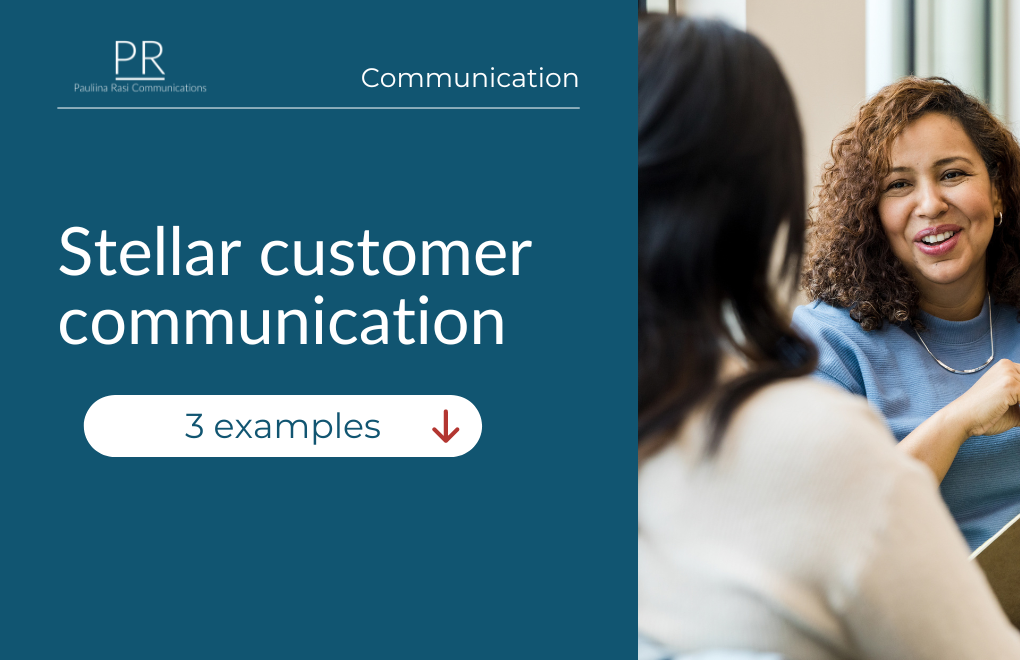Improve customer retention with unparalleled client communication. Learn from these three giants and steal the best practices for your small business.
There’s one area of content that too many businesses overlook.
It tends to slip through even the avid content marketer’s fingers.
However, when done right, it can improve customer retention and drive client referrals.
As those are two of the cheapest and easiest client acqui sition strategies, tapping into this one bit of communication can help especially small businesses and solopreneurs to improve their profitability.
What is it?
It’s unparalleled client communication.
The Missing Piece of the Content Chain
Consultants, trainers and small business owners – and even bigger teams! – often omit the crucial role content can play in delivering quality work for clients, and creating a client experience that makes them stay longer, come back more often and bring more of their friends.
I can understand that: It can feel hard enough getting the clients through the door in the first place, so at the end of the day, there is simply no energy or bandwidth left to think about content to create for existing clients.
Believe me, though, it does pay off, as improving retention and boosting your referral system can contribute to creating a solid client acquisition system that maintains itself, even when you’re focusing on other things than marketing (such as providing amazing client service to your amazing clients).
To help you see how easily this can be done, I dug up three examples from giant businesses – after all, they do have more resources to create amazing client communications than one-person-wonders and small teams.
Let’s leverage the backup work they’ve done in setting up tools and concepts for outstanding customer service and adapt some of their proven strategies to pamper our clients the way they deserve!
Google Knows It: Confused Mind Doesn’t Buy (Again)
Who & what
Google Workspace is the king of client communication and tutorials. At the slightest feature change, let alone new releases and changes, they come out with a tutorial page that answers the most common questions.
A recent example: Google Sign-in page layout changed, and though the update didn’t impact the usability of the service much, the Google team went to painstaking detail in explaining the update to their users.
Why that works
Google acknowledges the thirst for information amongst its users, and detailed tutorial pages satiate that thirst while protecting customer support teams’ time and resources.
The pages are often quite detailed but the information is well organised, thanks to subheadings and typographic choices like bold fonts and bullet points. This makes content easy to browse for those who only want an overall glance, while still offering plenty of detail for the information-thirstiest of users.
Transparent customer service improves client satisfaction and user experience, which, in turn, translates into higher retention and referral rates. Self-service information also decreases the need for customer support personnel.
Adapt to your business!
Adapt Google’s idea for a small business by creating a private FAQ document collating your clients’ most common questions. To keep things simple, start with a text document with a table of contents on the first page, so the readers can jump straight into the question they have.
Add to this document as soon as new questions come up, and make sharing it a part of your onboarding process to ensure every client will benefit from it.
Read more: Leverage guidelines and handbooks in client service
Lego Makes Their Clients Feel Clever
Who & what
Lego Customer Service has a challenge: churning out small parts in different combinations and dispatching them all over the world must lead to a mistake here and there, despite the highest level of quality control. This could lead to a customer service disaster and unhappy clients.
The company has averted a disaster and much more than that! They have set up an easy-to-use self-service portal for clients to order missing parts or replace broken parts in their Lego sets. The site is ultra-clear about when you can expect your replacement parts to arrive, and when they post them, they put the nicest letter on the envelope to soften the consumer’s dissatisfaction.
Why that works
The ease of ordering a replacement for an Easter Bunny’s cheek that kept falling off (true story!) does a lot to console unhappy Lego builders. However, the customer service letter is the dot on the ‘i’.
The tone of the letter is carefully calibrated to highlight the efforts put in by the Lego team to avoid falling-cheek-disasters from happening but also to acknowledge the client’s dissatisfaction. The formulation puts the client at the centre, no matter how small the harm caused.
This makes the client feel appreciated, not undervalued, which makes enjoying the Lego building easy. The emotional memory stays long after the bunny cheek is lost again.
Adapt to your business!
Create a message template library to address the most common client situations, from onboarding to consultation call wrap-ups to potential reclamations. Crafting a client-centred message is much easier beforehand, when you’re not going through the emotional process of dealing with a client complaint.
Don’t belittle your business’ and team’s efforts but acknowledge the client’s feelings and focus on what they want to gain from working with you.
Read More: How to prepare for negative publicity?
Case Freshbooks: Acknowledge the Learning Curve
Who & what
Freshbooks is an accounting, invoicing and productivity platform for entrepreneurs and businesses.
They send their clients regular update emails summarising new features, reminding them of existing ones and educating them on how to streamline and automate various administrative tasks that burden active business people.
Why that works
Using SaaS services is not easy. One tool can do countless things, from tracking your contractors’ hours to automatically chasing unpaid invoices, but clients… might forget most of those!
The Freshbooks team acknowledges the fact that we are lazy tech users and might not read every single word of an automated onboarding sequence or can simply forget some features we don’t need right away. That’s why they continue consistent communication long after the onboarding phase.
Regular tips, reminders and advice allow the user to advance at their own pace, integrating new features, plug-ins and apps into their processes one at a time. This allows them to save time, lighten the administrative workload and get more of their investment.
And it’s not only about content, either. The regularity and the friendly tone of the emails seem to say: “Don’t worry if you don’t have the headspace for this right now. We’ll be back in your inbox next month to share new ideas so you can keep streamlining your processes!”
Adapt to your business!
Create a “clients only” newsletter, podcast or community that helps your clients make more of your collaboration or the service you provide. Think simple: sending a monthly email with some additional resources or a voice note summarising tips and insights.
To tap into retention and referral potential of good communication, keep this service going for a while after your clients have stopped working with you, to remind them of the value you added to their business.
Read more: Adapt your content to where your client is at
Tailor Content to Your Client Journey
I hope these examples have helped you gain some fresh ideas on how to tailor your content to create an even better customer experience for your clients.
These are, of course, only examples, and what works for you, your business and your customers depends on the specificities of your business. When testing different strategies, stay tuned to what resonates with your clients and you can’t go wrong.
If implementation feels hard, join me at the monthly Content Circle for accountability support, or book a 1:1 Content Strategy Call to talk about how content can help you attract more clients.
Could client communications be outsourced? Find out – Download the Content Outsourcing Map!







Recent Comments